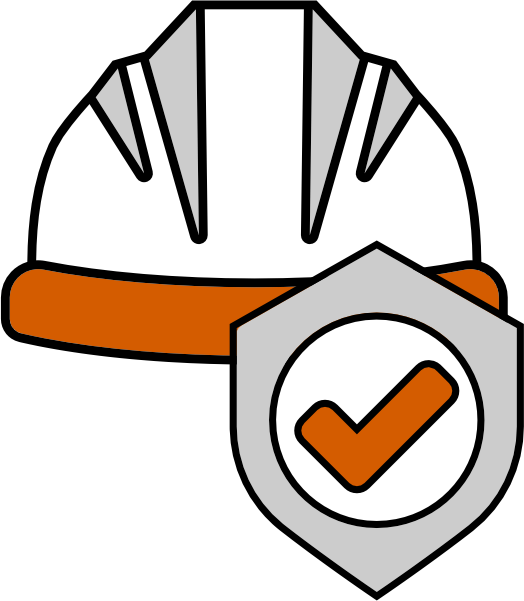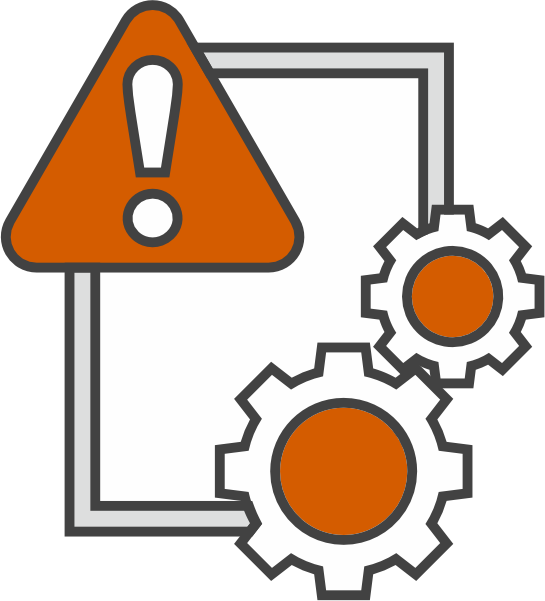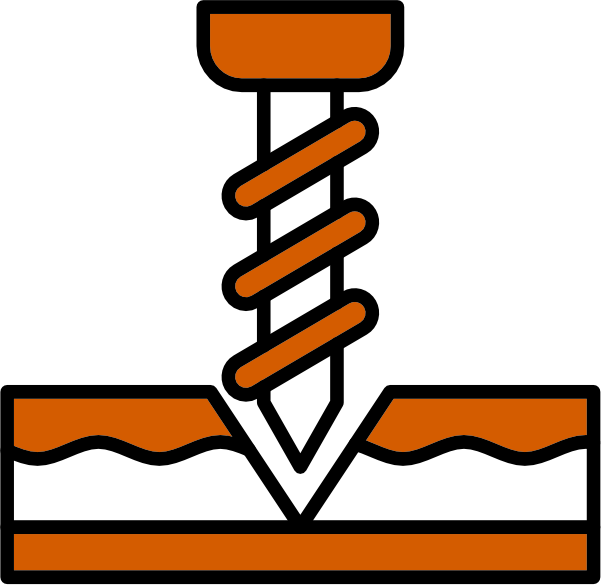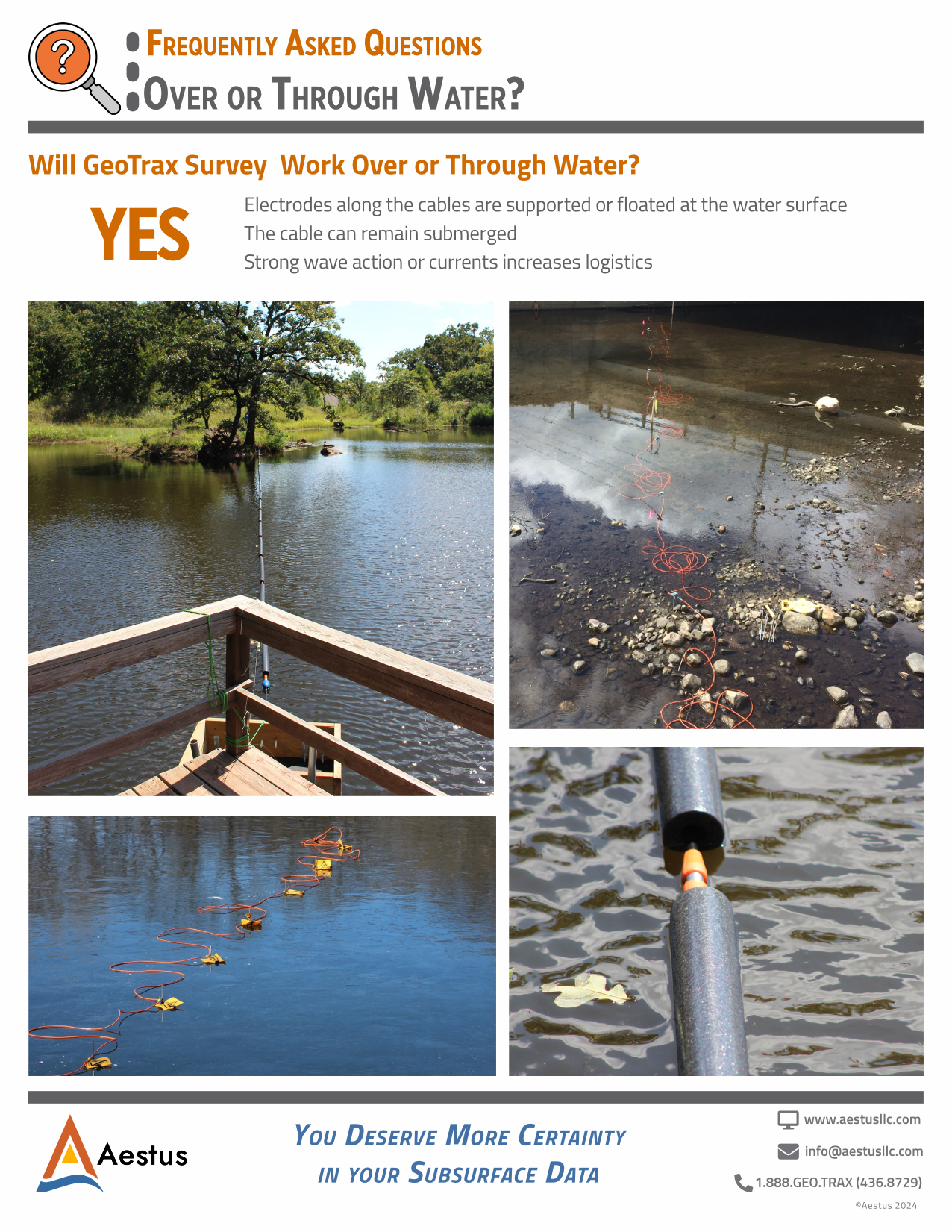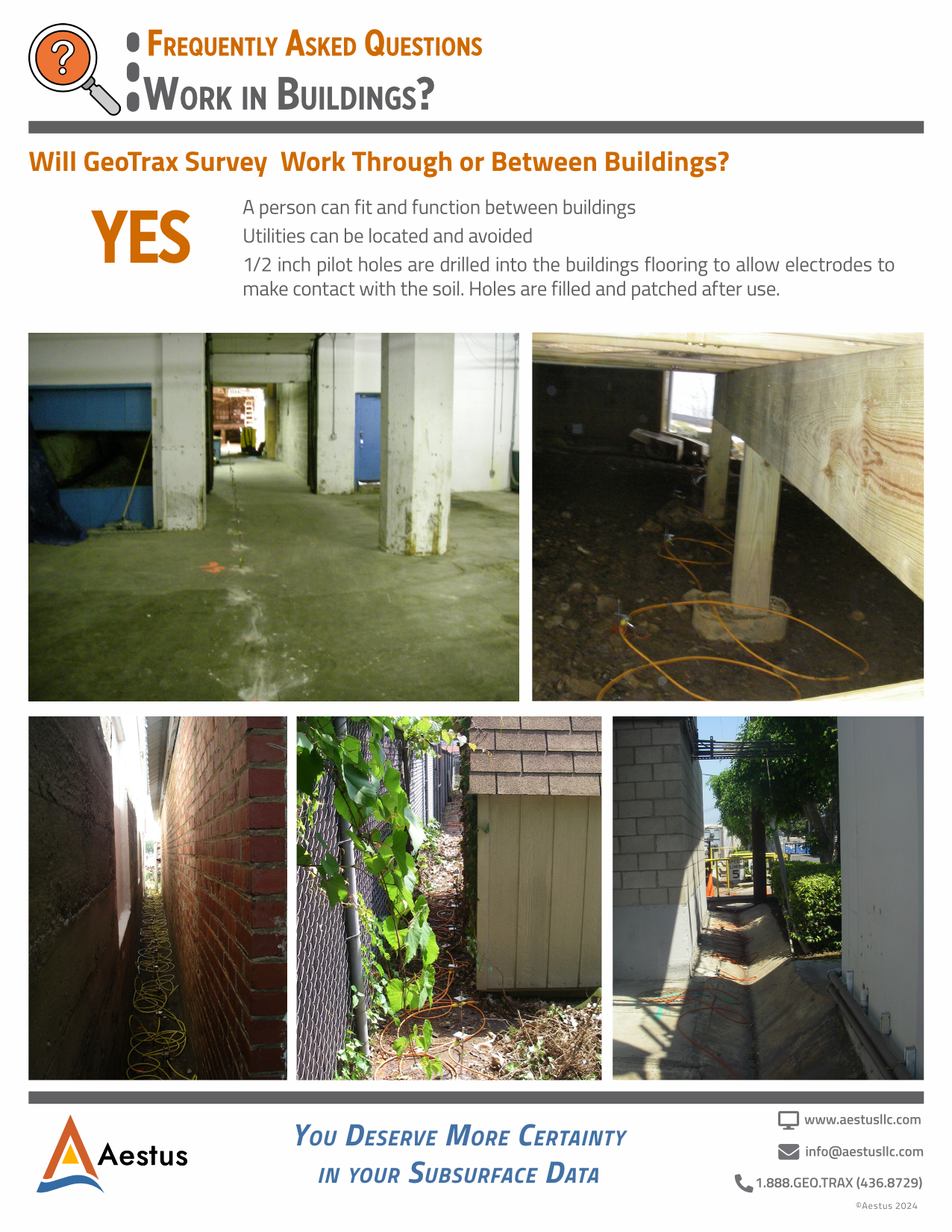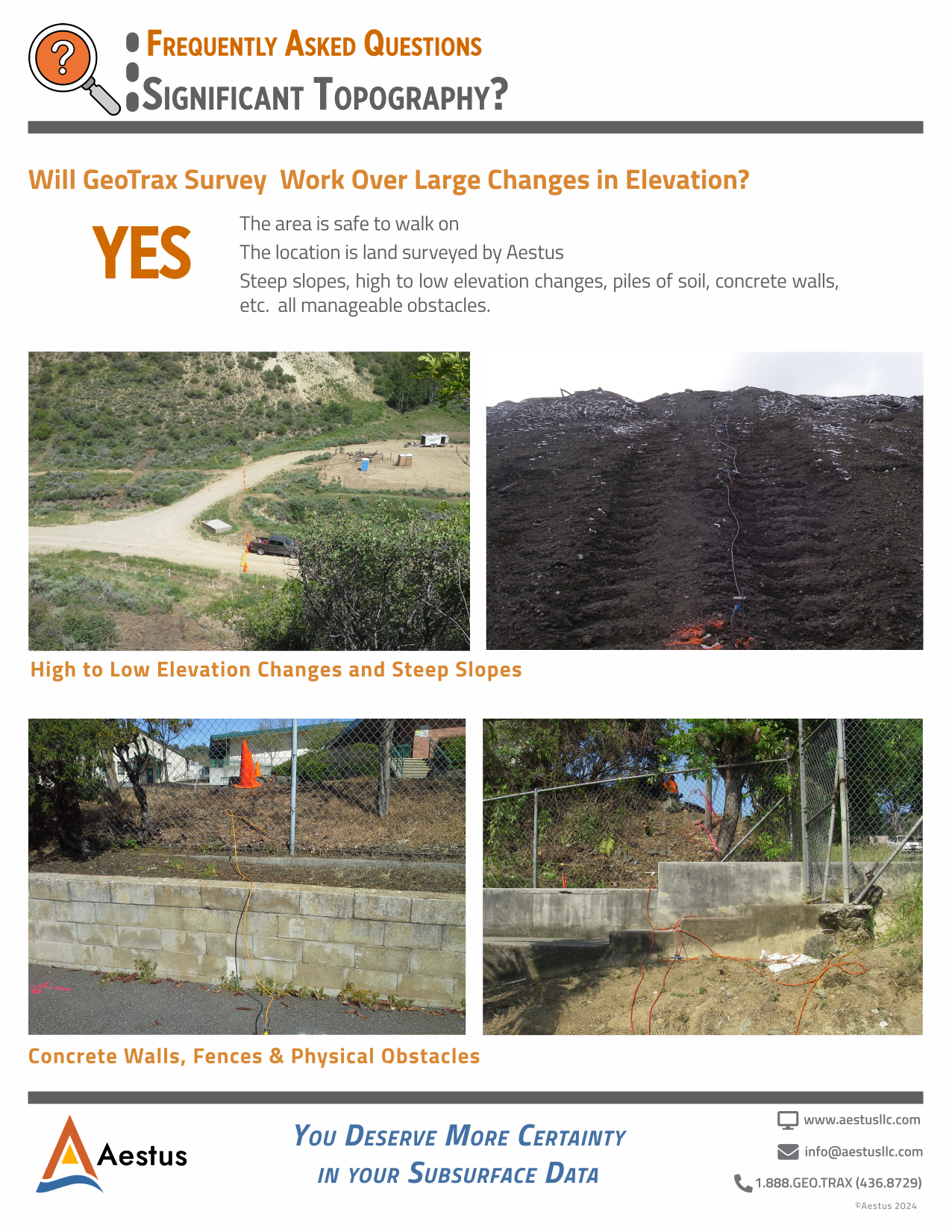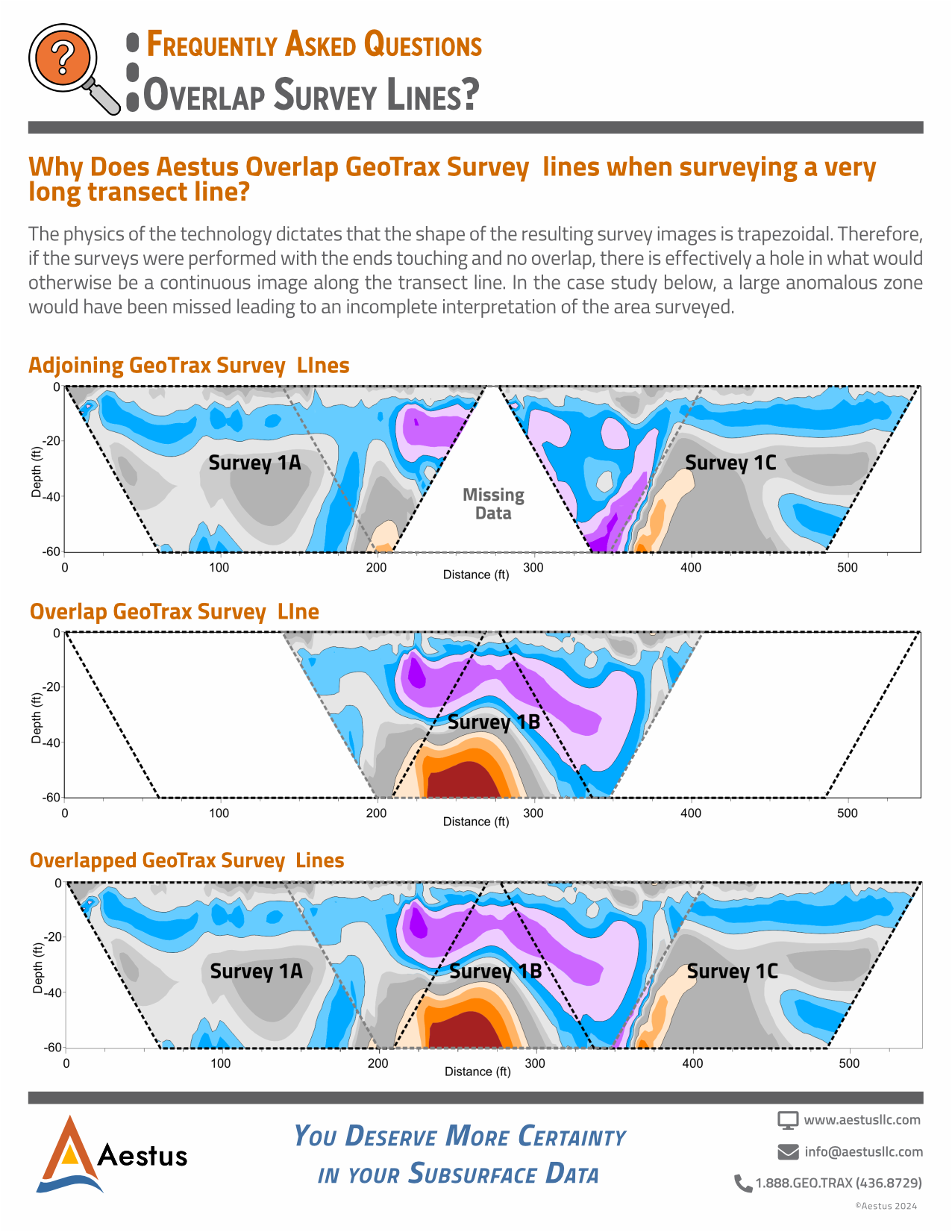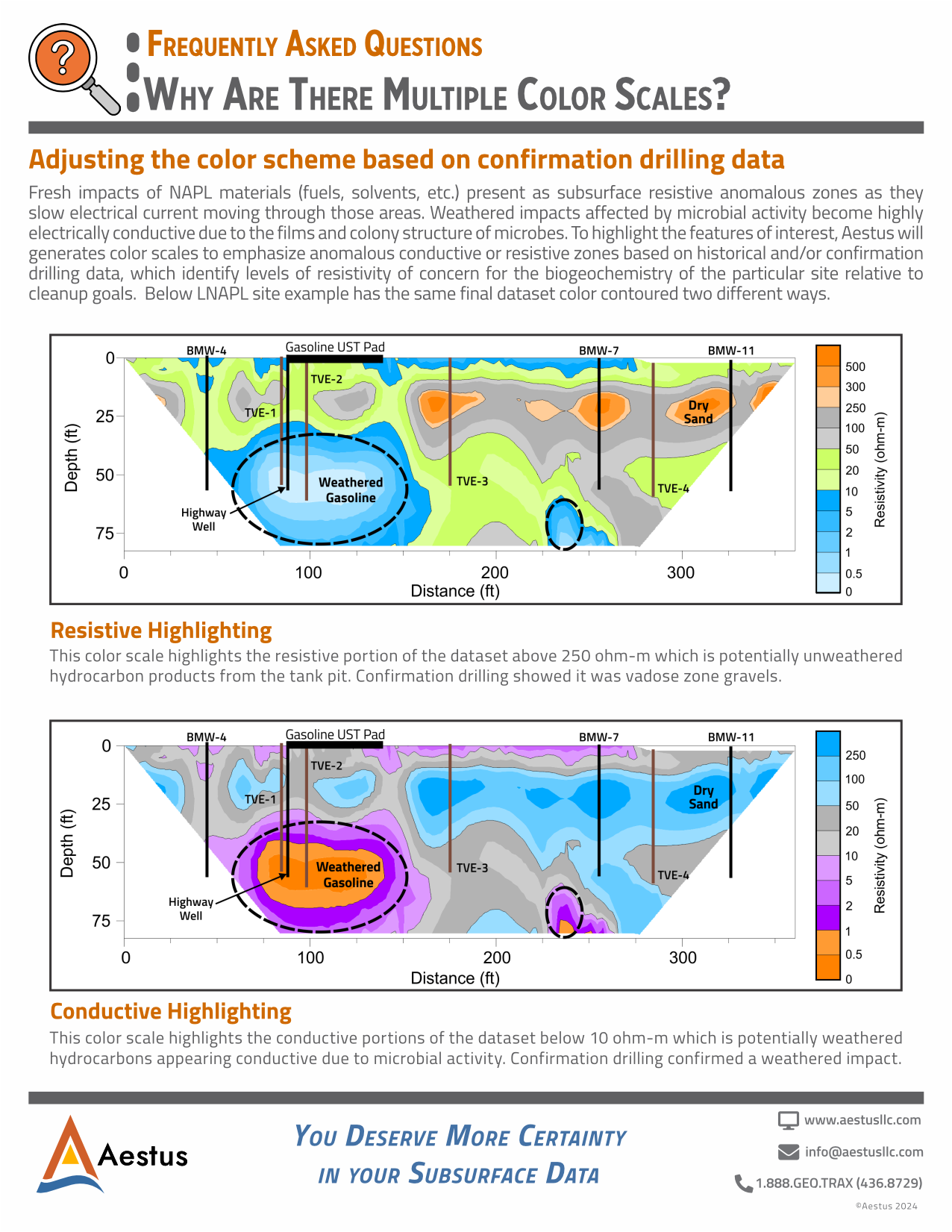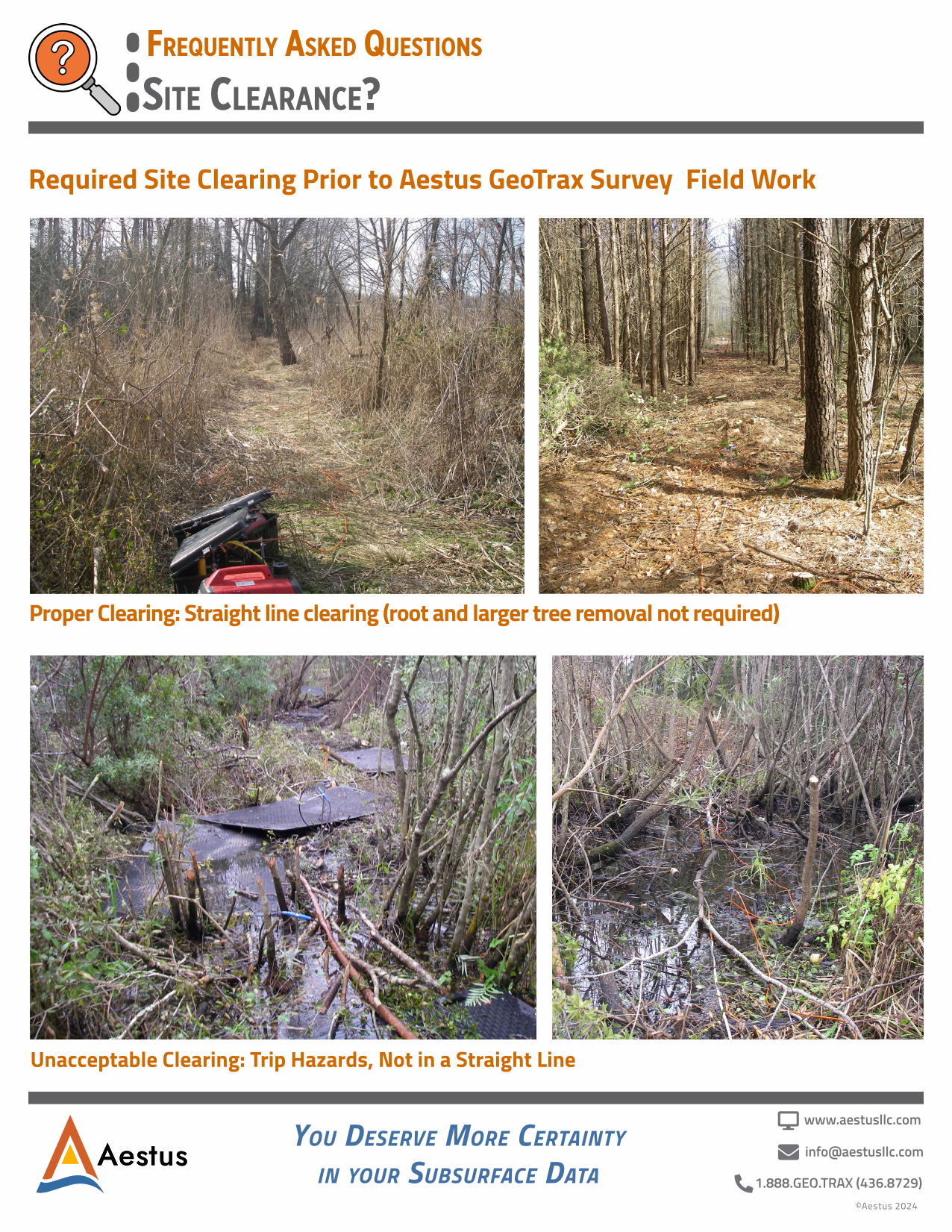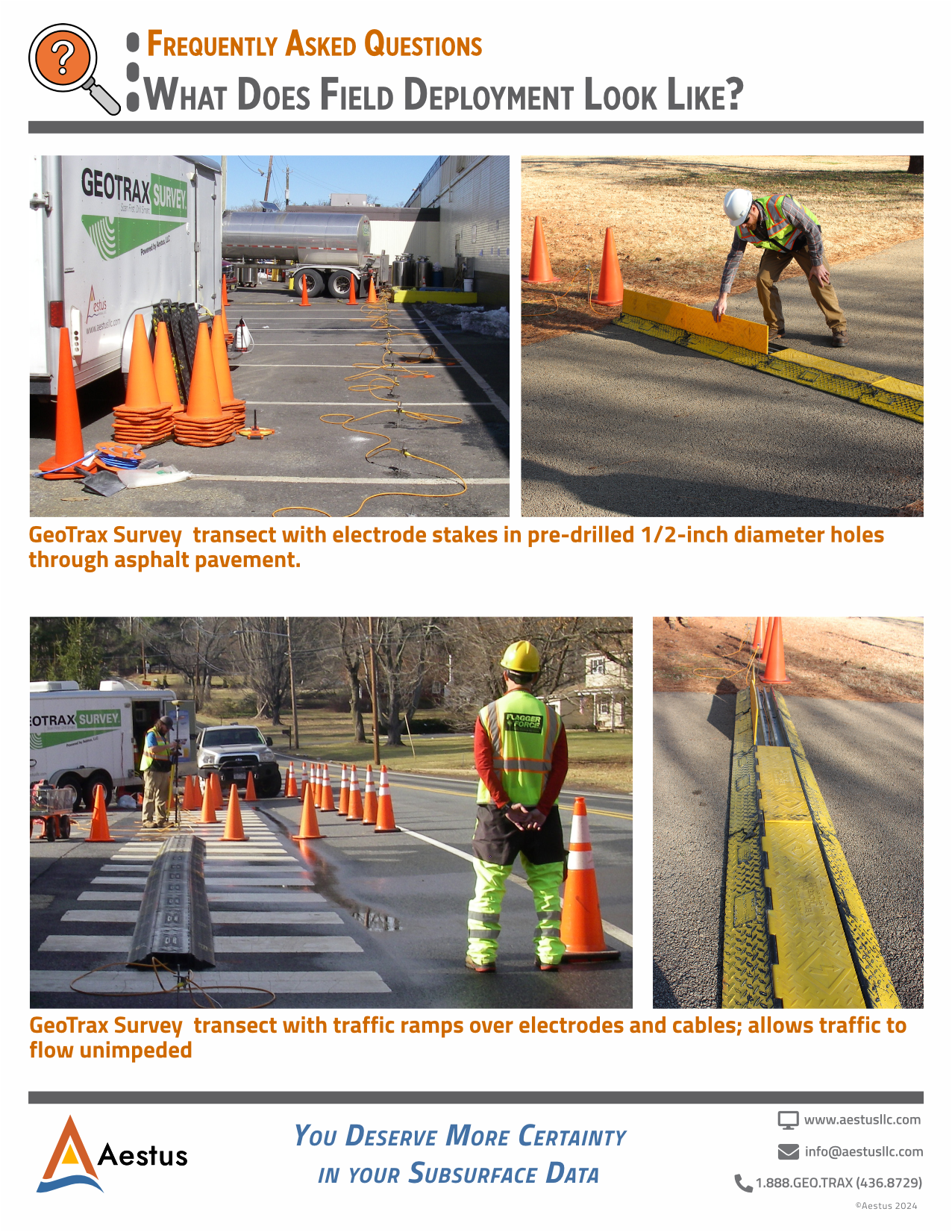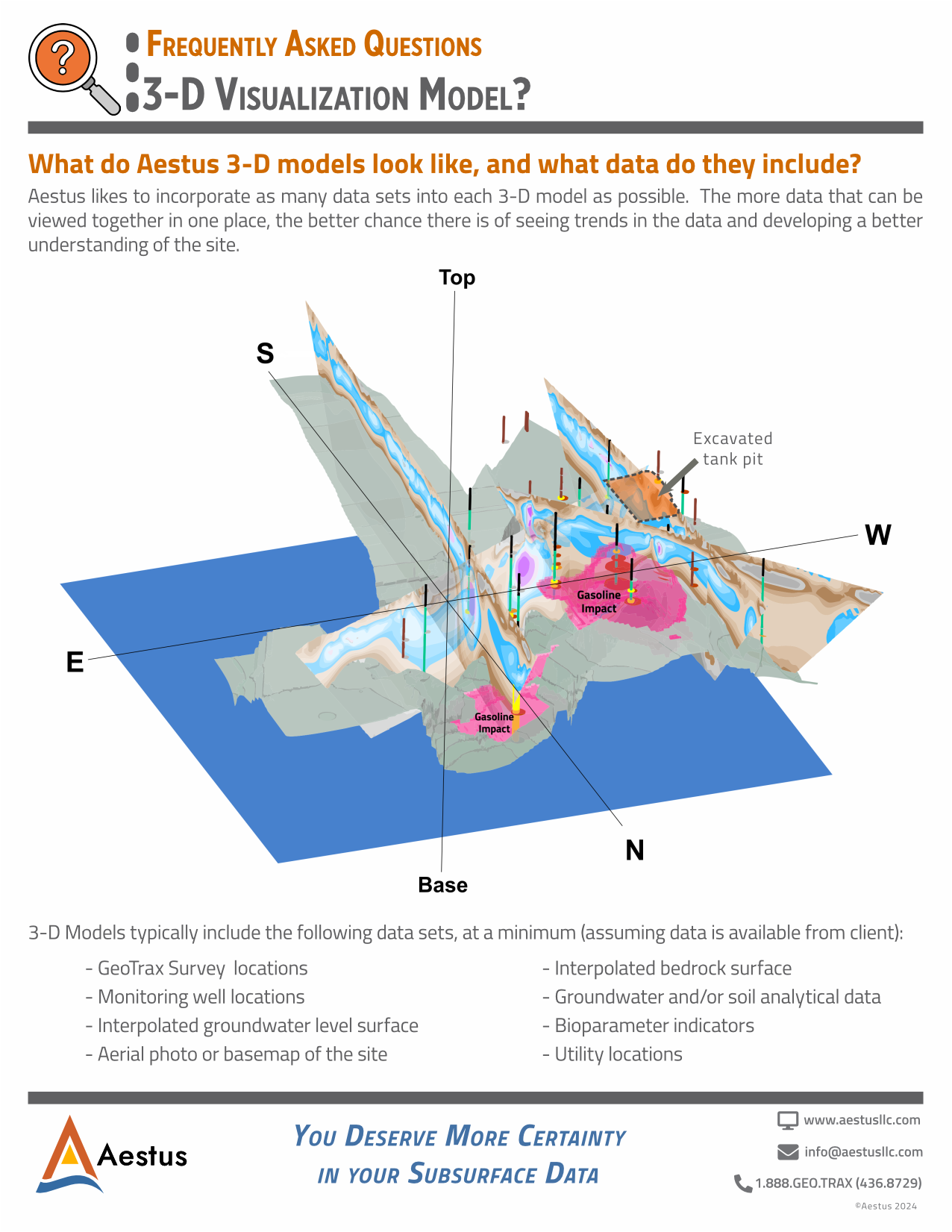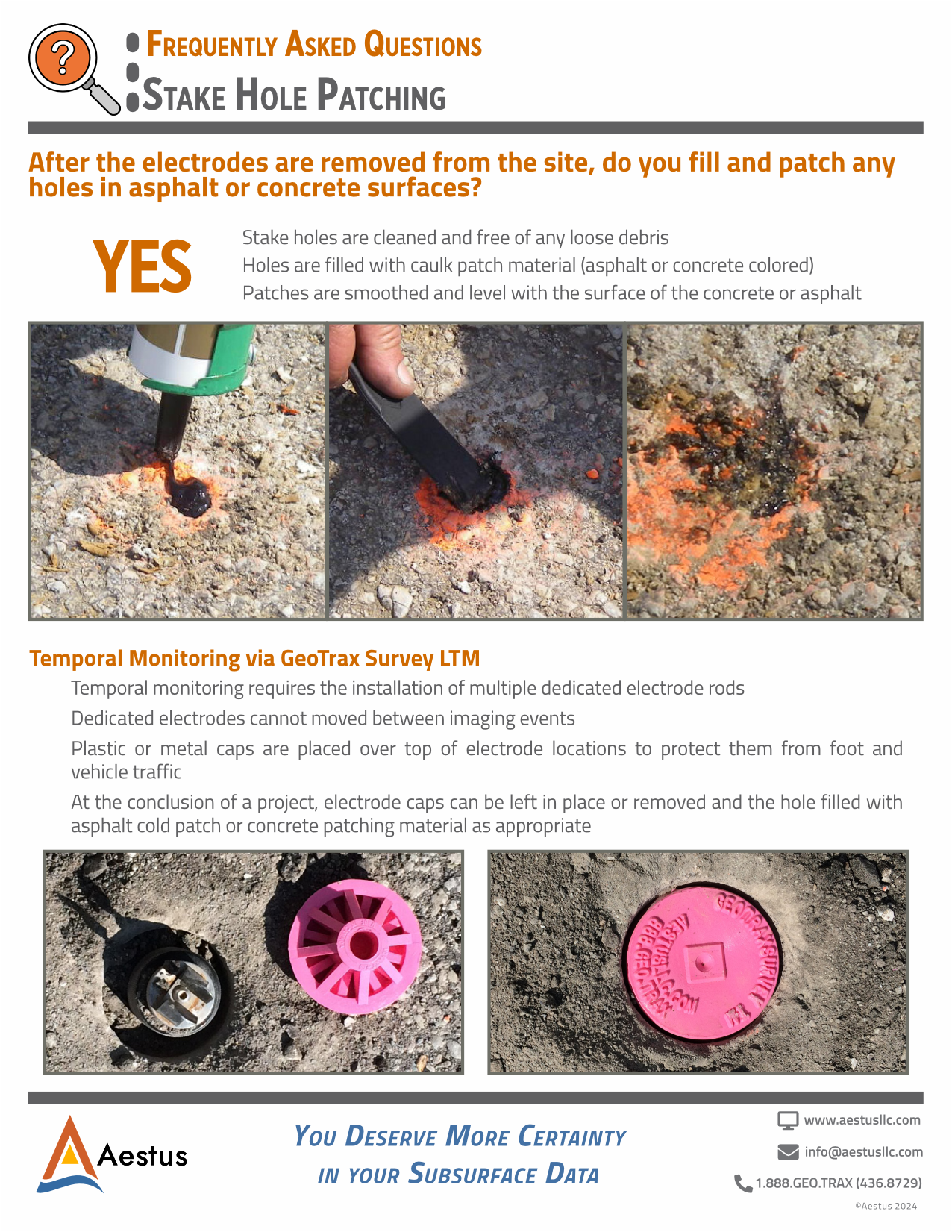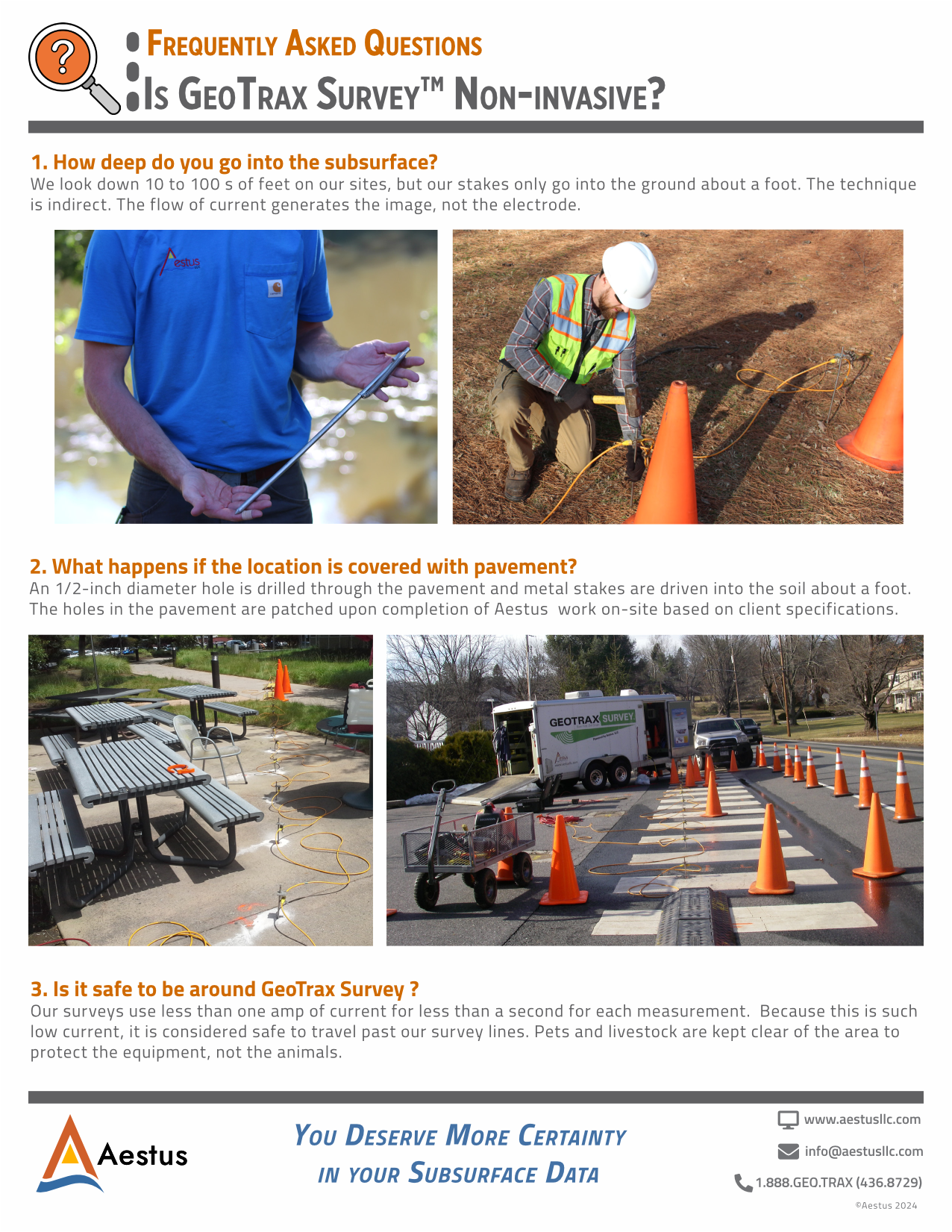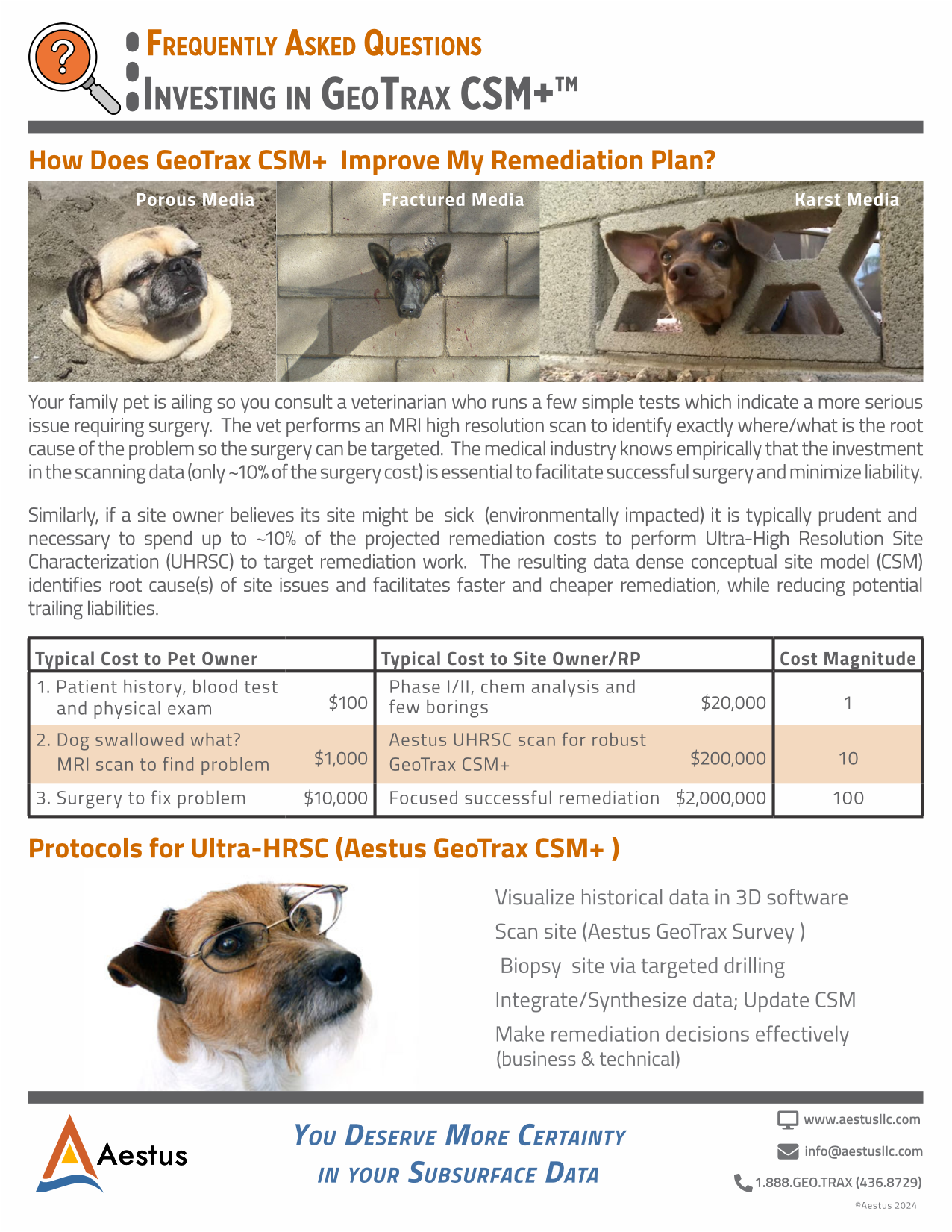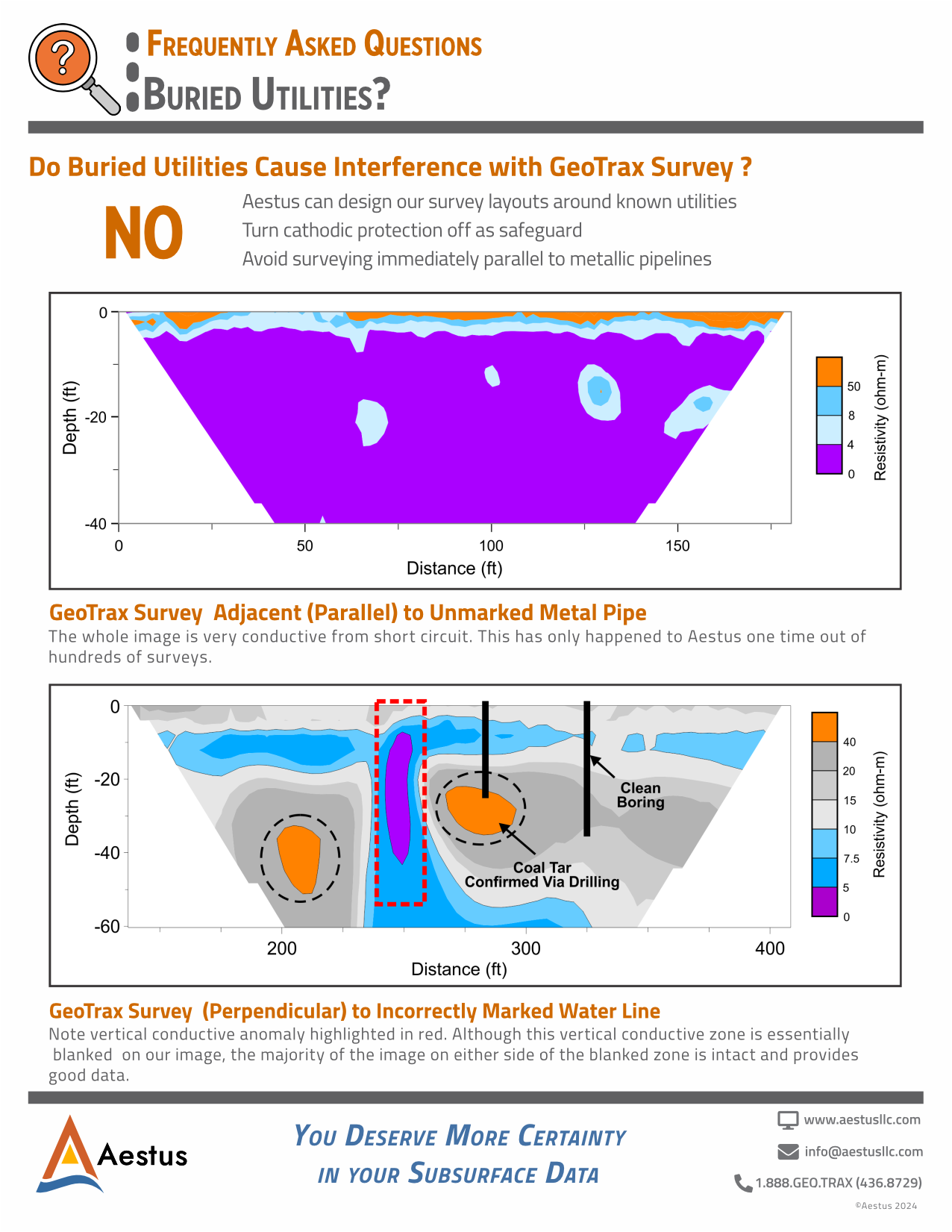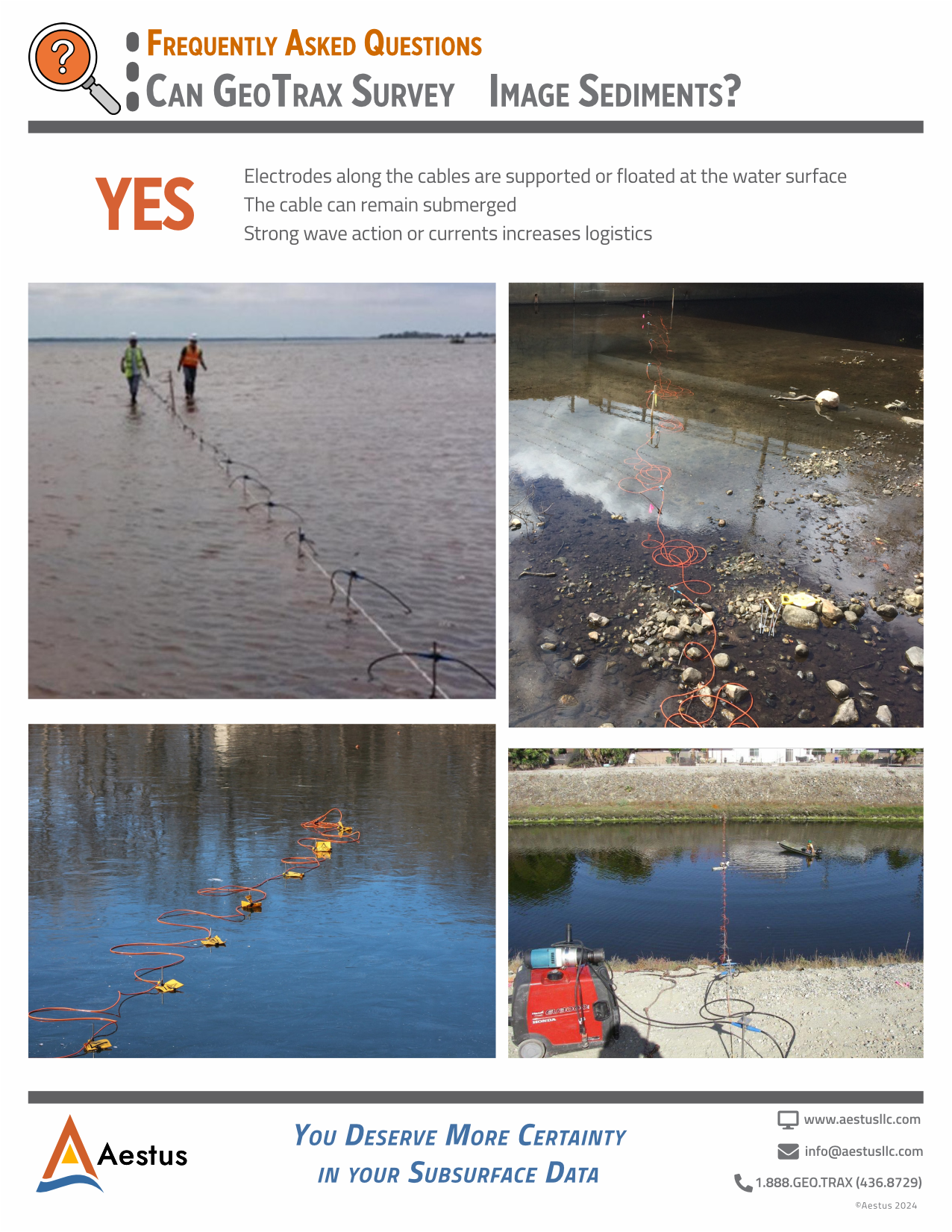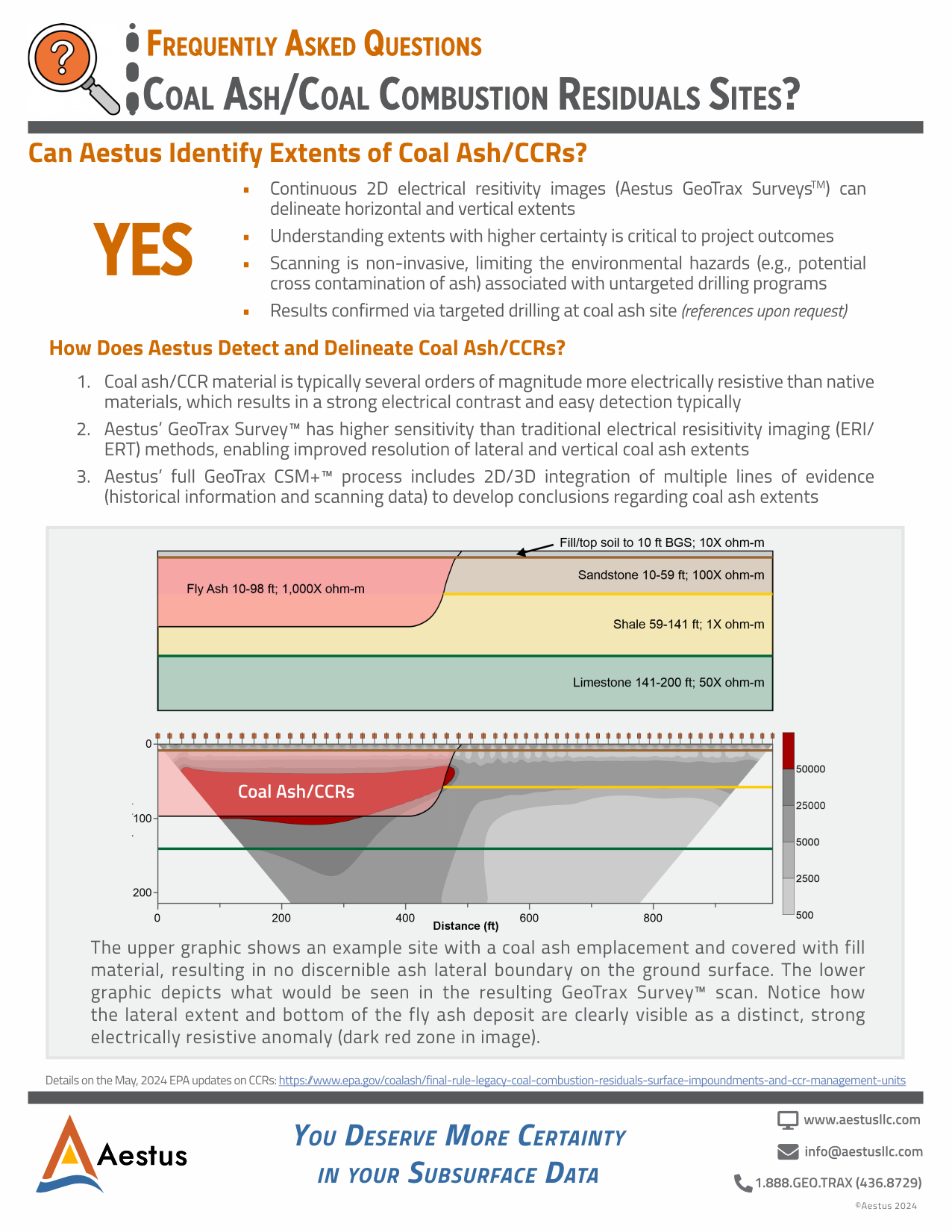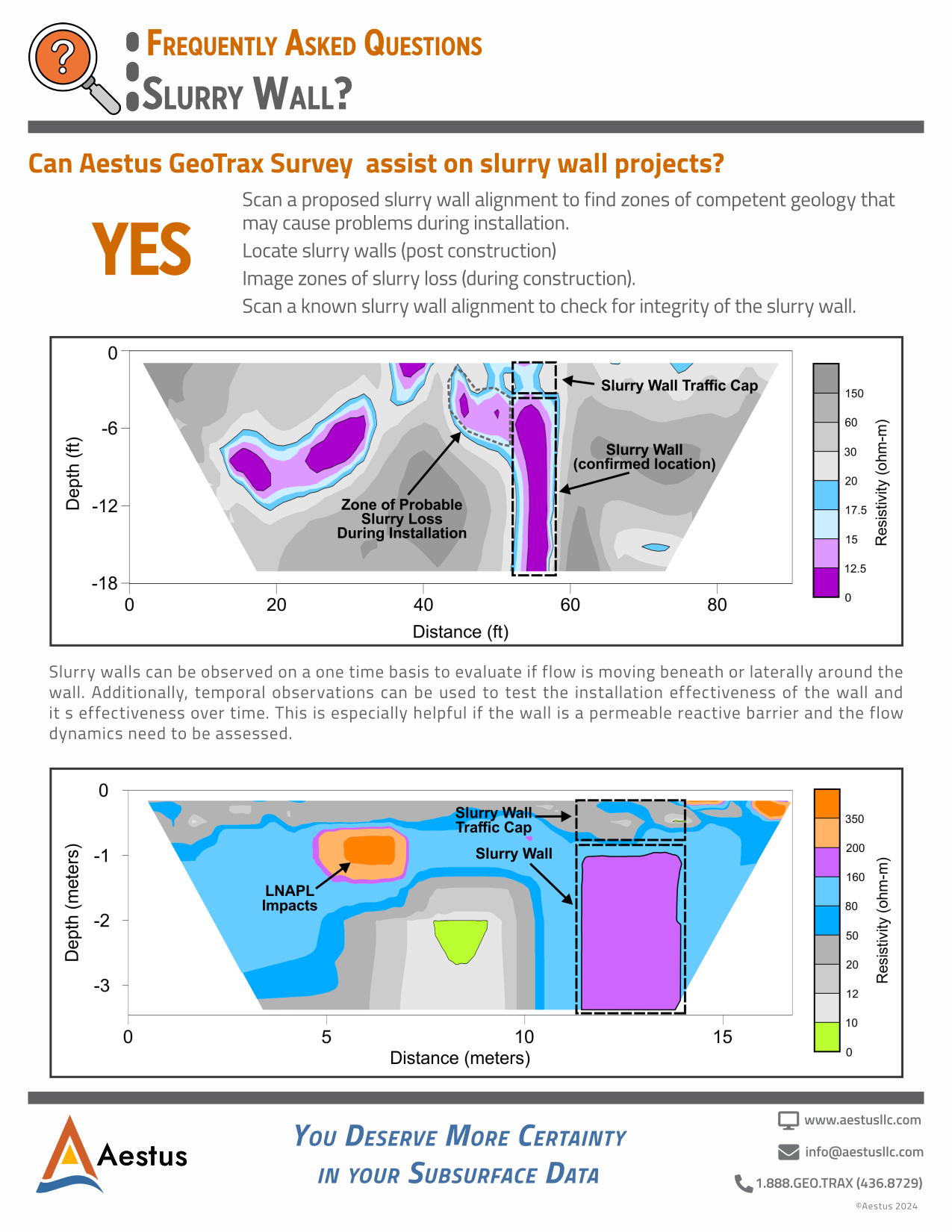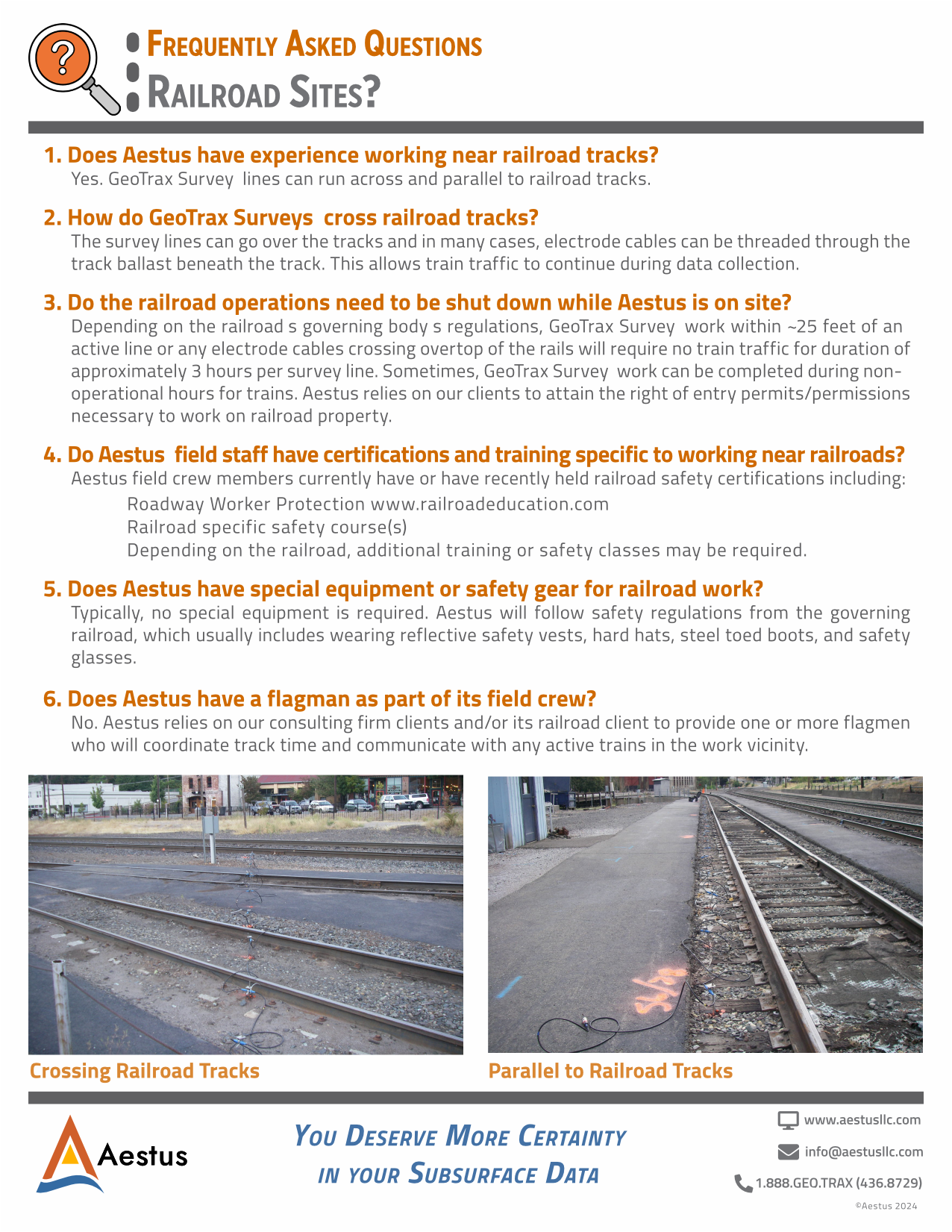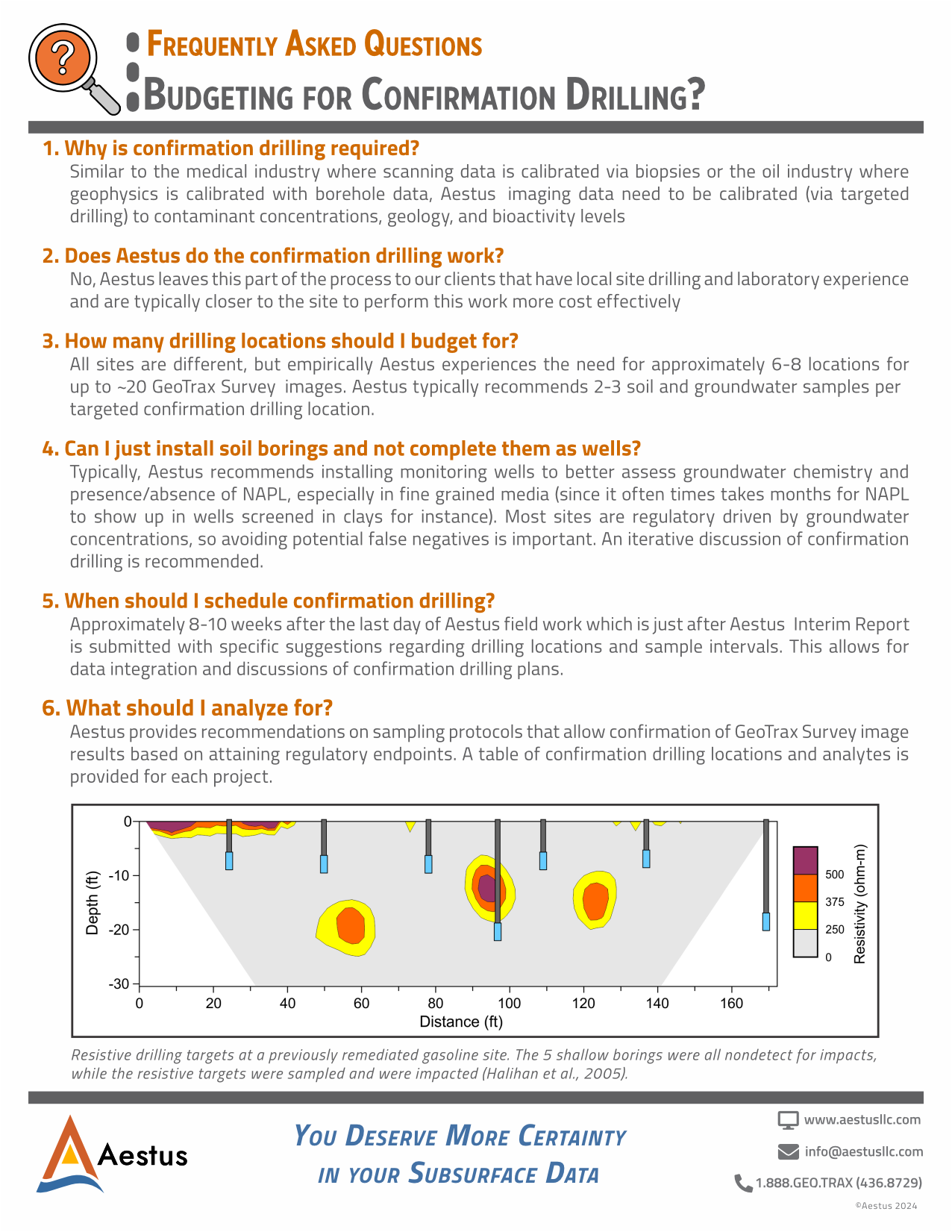Yes.
Aestus can:
- scan a proposed slurry wall alignment to find zones of competent geology, which might cause problems during installation;
- locate slurry walls (post construction);
- image zones of slurry loss (during construction); and
- scan a known slurry wall alignment to check for integrity of the slurry wall.
It should be noted that slurry walls can be observed on a one-time basis to evaluate if flow is moving beneath or laterally around the wall. Additionally, temporal (GeoTrax Monitoring) data can be used to test the effectiveness of the wall at installation and over time. This is especially helpful if the wall is a permeable reactive barrier and the flow dynamics need to be assessed.
Yes.
GeoTrax Survey lines can run across and parallel to railroad tracks. The survey lines can go over the tracks, and in many cases, electrode cables can be threaded through the track ballast beneath the track. This allows train traffic to continue during data collection.
Depending on the railroad’s governing body’s regulations, GeoTrax Survey work within ~25 feet of an active line or any electrode cables crossing over top of the rails will require no train traffic for a duration of approximately 3 hours per survey line. Sometimes, GeoTrax Survey work can be completed during non-operational hours for trains. We rely on our clients to attain the right entry permits and permissions necessary to work on railroad property.
Aestus field crew members currently have or have recently held the following railroad safety certifications:
- Roadway Worker Protection (www.railroadeducation.com)
- Railroad-specific safety courses
Depending on the railroad, additional training or safety classes may be required.
Typically, no special equipment is required. Aestus will follow safety regulations from the governing railroad, which usually includes wearing reflective safety vests, hard hats, safety-toed boots, and safety glasses.
Yes.
- A person can fit and function between buildings
- Utilities can be located and avoided
- 1/2 inch pilot holes are drilled into the buildings flooring to allow electrodes to make contact with the soil. Holes are filled and patched after use.
No.
Aestus relies on our consulting firm and/or railroad clients to provide one or more flagmen who will coordinate track time and communicate with any active trains in the vicinity of our work.
Yes.
Electrodes along the cables are supported or floated at the water surface. Strong wave action or currents increase logistics.
Yes.
- Electrodes along the cables are supported or floated at the water surface
- The cable can remain submerged
- Strong wave action or currents increases logistics
Yes.
Continuous 2D GeoTrax Surverys can delineate horizontal and vertical extents.
